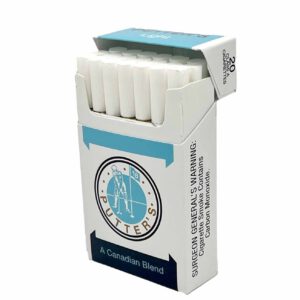Imagine navigating through a dense forest without a map or compass, feeling lost and unsure of the right path to take.
Just like finding your way through unfamiliar terrain, understanding and complying with tobacco industry regulations can be equally challenging.
As you begin to unravel the complexities of this intricate landscape, you’ll discover key insights and practical tips to help you successfully navigate the ever-evolving regulatory environment.
Regulatory Bodies in Tobacco Control
When navigating tobacco industry regulations, understanding the roles of Health Canada and the CFIA as key regulatory bodies is essential for compliance and transparency.
Health Canada focuses on regulatory oversight, ensuring that tobacco products meet safety standards through product approval and inspections. On the other hand, the CFIA manages importation and distribution processes, contributing to industry transparency and safeguarding public health.
These bodies play a crucial role in enforcing regulations to maintain the integrity of the tobacco industry. Penalties for non-compliance, such as fines, license suspension, and legal consequences, underscore the importance of adhering to set guidelines.
Impact of Non-Compliance of Tobacco Industry Regulations
Non-compliance with tobacco industry regulations carries severe consequences, including financial penalties, license suspension, and potential criminal charges, impacting both a company’s stability and reputation. Reputational consequences of non-compliance can be significant, leading to a loss of consumer trust, market share, and revenue. Violations may result in legal implications, damaging the company’s standing in the industry and hindering effective operations. Additionally, failure to adhere to reporting regulations can have lasting effects on the company’s sustainability.
The legal implications of non-compliance extend beyond monetary fines to potential criminal charges, fines, and even imprisonment for individuals involved in non-compliant practices within the tobacco industry. Such actions not only jeopardize the financial stability of the company but also tarnish its reputation, potentially leading to market exclusion. It’s crucial for companies to prioritize compliance with tobacco industry regulations to avoid these detrimental consequences and safeguard both their financial well-being and standing in the market.
Key Features of Regulations
Transitioning from the consequences of non-compliance, a detailed examination of the key features of tobacco industry regulations reveals the stringent requirements governing product design, manufacturing processes, and traceability measures. Regulatory guidelines stipulate that manufacturers must establish robust procedures for manufacturing, design validation, and storage to ensure compliance with the regulations.
These guidelines are crucial for maintaining product conformity, preventing the distribution of nonconforming products, and safeguarding public health. Proposed regulations consist of 10 subparts that outline specific requirements for manufacturers to follow diligently. Compliance procedures are essential for both finished and bulk tobacco product manufacturers to adhere to the regulatory standards set forth.
Compliance Requirements for Manufacturers
To ensure compliance with regulatory standards, manufacturers in the tobacco industry must meticulously report detailed information on ingredients, manufacturing processes, packaging, labeling, and promotion to regulatory bodies like Health Canada and CFIA. Product testing is a crucial aspect of compliance, requiring manufacturers to conduct thorough testing to assess factors such as product composition and emissions. Compliance also hinges on meeting strict documentation standards, where manufacturers must maintain detailed records of all processes, ingredients, and testing results.
Adhering to these standards is paramount for evaluating health risks associated with tobacco products, safeguarding public health, and upholding Canadian regulatory requirements. By following these compliance requirements, manufacturers not only demonstrate their commitment to transparency and consumer safety but also enable regulatory bodies to effectively monitor and enforce industry regulations.
Therefore, understanding and meticulously adhering to product testing and documentation standards are essential for manufacturers to navigate the complex landscape of tobacco industry regulations and ensure market integrity.
Reporting Process for Manufacturers
With a stringent focus on detail and compliance, tobacco manufacturers are required to regularly submit comprehensive reports to regulatory bodies like Health Canada and CFIA, detailing information on ingredients, manufacturing processes, packaging, labeling, and promotion of tobacco products. Data accuracy is paramount in these reports as they’re crucial for evaluating health risks, ensuring compliance, and protecting public health. Timely submission is equally important to meet compliance requirements and regulatory deadlines.
To fulfill these obligations, manufacturers must pay close attention to documentation requirements and adhere to specific reporting standards set by regulatory authorities. The reports must provide clear and detailed insights into the composition and production of tobacco products.
By maintaining meticulous records and submitting reports in a timely manner, manufacturers play a vital role in providing the necessary information for risk assessment and ensuring transparency within the industry. Adhering to these reporting processes is essential for both regulatory compliance and fostering trust within the tobacco industry community.
Compliance Requirements for Importers
Importers in the tobacco industry must meticulously adhere to Canadian standards and regulations to ensure the protection of public health through strict compliance requirements. As an importer, it’s your responsibility to ensure that all tobacco products meet the necessary criteria regarding composition, labeling, and packaging. Your role is crucial in upholding the quality and safety of tobacco products available in the Canadian market.
Meeting compliance challenges involves collaborating closely with regulatory bodies to submit accurate reports in a timely manner. Adherence to specific reporting processes and deadlines is essential for maintaining regulatory compliance within the tobacco industry. By understanding and fulfilling your importer responsibilities diligently, you contribute significantly to safeguarding public health and upholding industry standards.
Stay vigilant, detail-oriented, and proactive in navigating the regulatory landscape to ensure that your imports meet all necessary requirements for the benefit of public health and regulatory adherence.
Frequently Asked Questions
What Are the Best Practices for Comprehensive Tobacco Control Programs?
To create effective tobacco control programs, focus on community engagement and policy advocacy. Encourage smoke-free areas, raise tobacco taxes, and offer support for quitting. Utilize educational campaigns, media outreach, and collaboration. Monitor progress, enforce regulations, and involve stakeholders for success.
What Strategies Do Tobacco Companies Use?
To market tobacco products, companies employ strategies like colorful packaging and sponsorships to attract consumers. They target specific demographics, use product placement, and offer discounts. It’s crucial to ensure regulatory compliance in all marketing efforts.
What Is the Healthiest Form of Nicotine?
When it comes to nicotine alternatives, nicotine replacement therapy (NRT) stands out as the healthiest form. NRT products like patches, gum, and lozenges offer harm reduction techniques by providing controlled doses of nicotine without the harmful chemicals in tobacco smoke.
Are Esse Lights Less Harmful?
Esse Lights may offer reduced risk compared to regular cigarettes due to lower tar levels. However, remember that harm reduction doesn’t mean risk-free. Even milder options can still harm your health. Stay informed for smarter choices.



